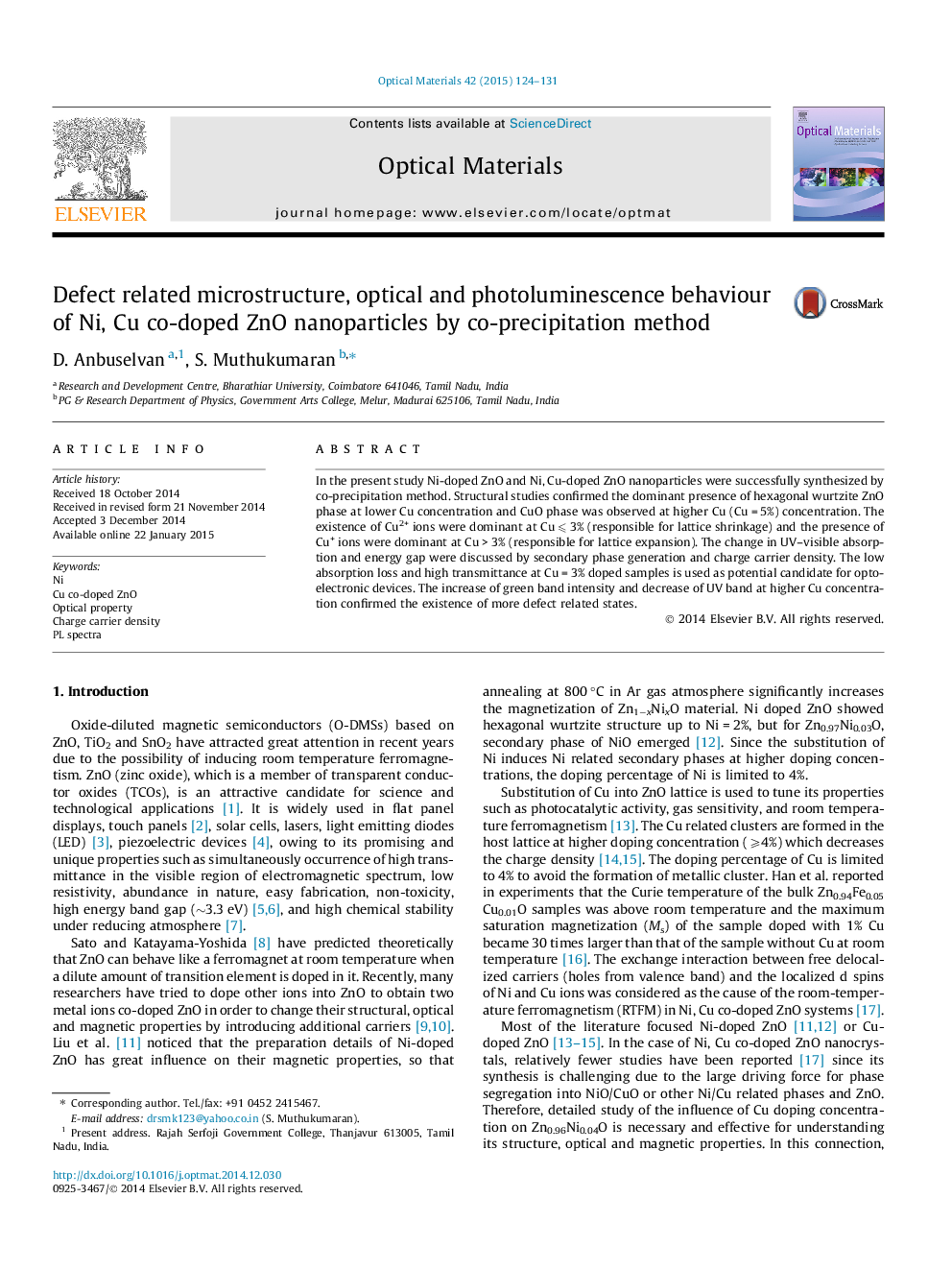| Article ID | Journal | Published Year | Pages | File Type |
|---|---|---|---|---|
| 1493921 | Optical Materials | 2015 | 8 Pages |
•Ni, Cu co-doped ZnO nanoparticles were synthesized via co-precipitation method.•Secondary phase (CuO) was formed at Cu = 5%.•Dominant Cu2+ is responsible for lattice shrinkage at Cu ⩽ 3% and Cu+ is for lattice expansion.•Low absorption and high transmittance at Cu = 3% is used for opto-electronic devices.•Increase of green band at higher Cu% confirmed the more defect related states.
In the present study Ni-doped ZnO and Ni, Cu-doped ZnO nanoparticles were successfully synthesized by co-precipitation method. Structural studies confirmed the dominant presence of hexagonal wurtzite ZnO phase at lower Cu concentration and CuO phase was observed at higher Cu (Cu = 5%) concentration. The existence of Cu2+ ions were dominant at Cu ⩽ 3% (responsible for lattice shrinkage) and the presence of Cu+ ions were dominant at Cu > 3% (responsible for lattice expansion). The change in UV–visible absorption and energy gap were discussed by secondary phase generation and charge carrier density. The low absorption loss and high transmittance at Cu = 3% doped samples is used as potential candidate for opto-electronic devices. The increase of green band intensity and decrease of UV band at higher Cu concentration confirmed the existence of more defect related states.
Graphical abstractFigure optionsDownload full-size imageDownload high-quality image (179 K)Download as PowerPoint slide
